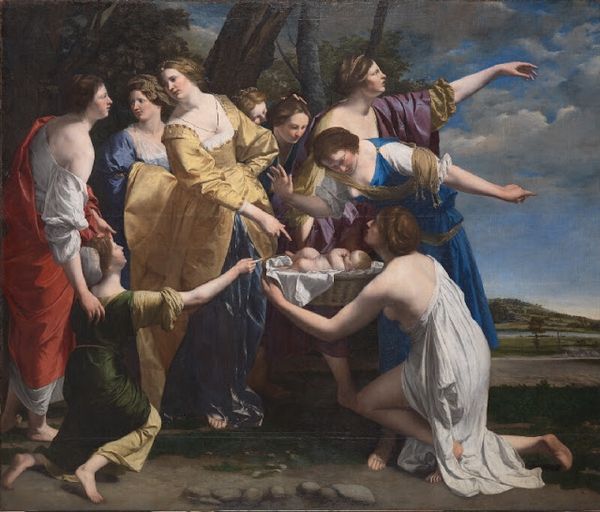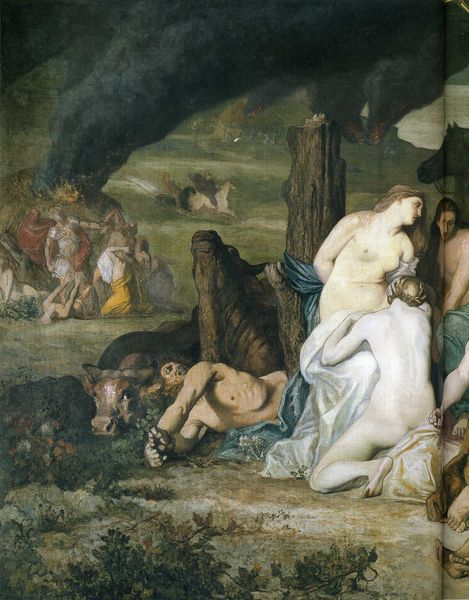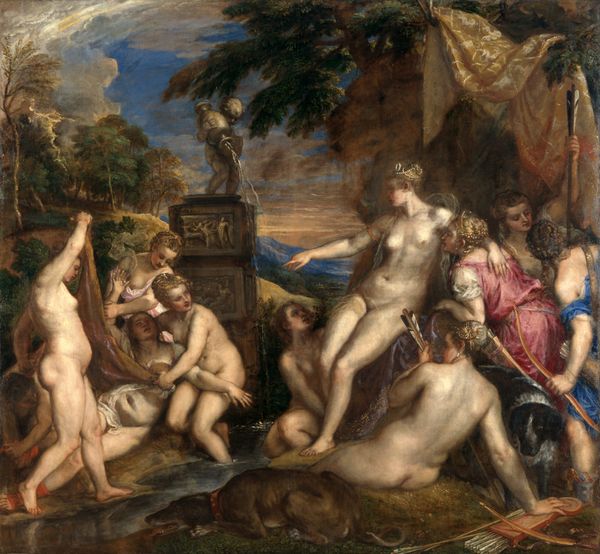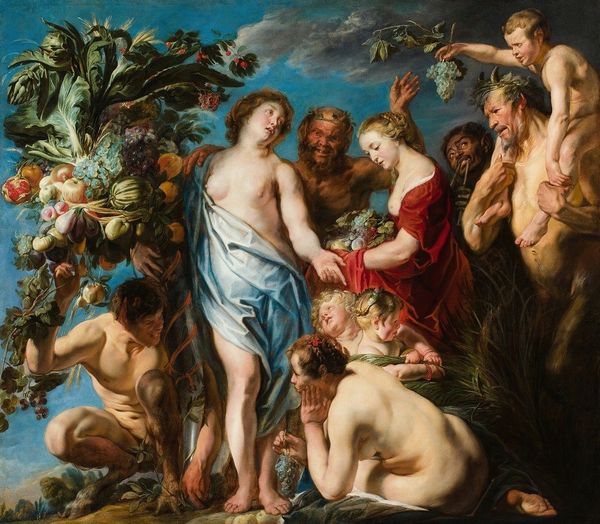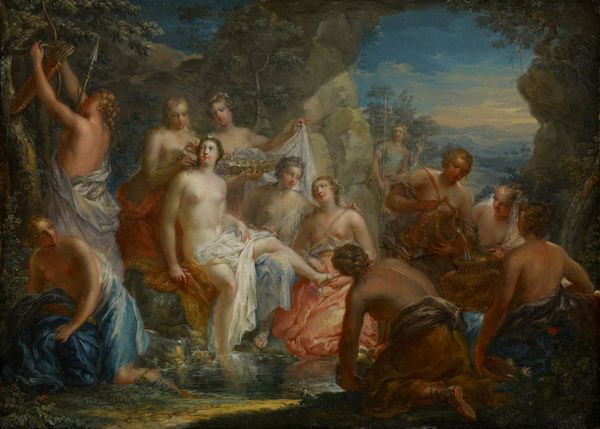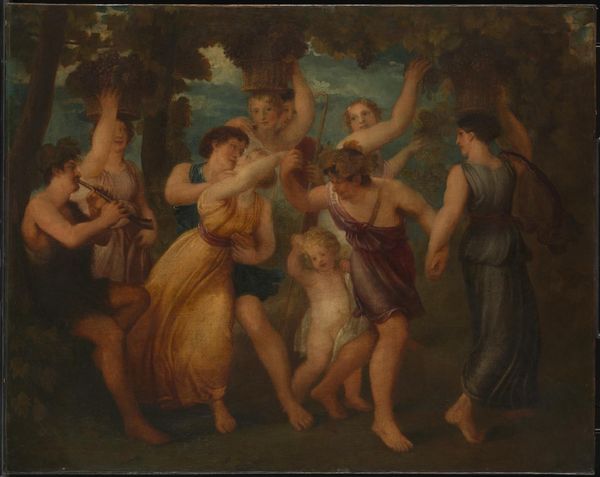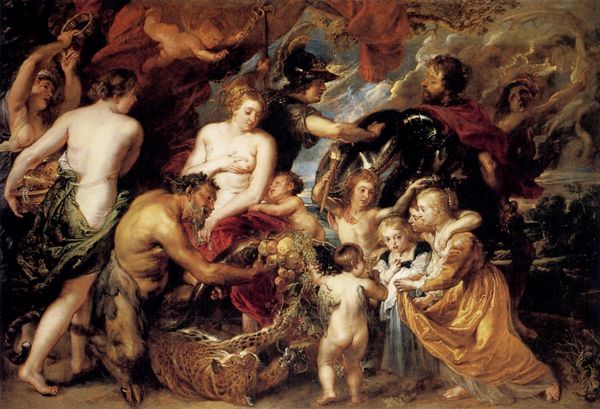
painting, oil-paint
#
portrait
#
allegory
#
painting
#
oil-paint
#
mannerism
#
figuration
#
oil painting
#
history-painting
#
portrait art
Copyright: Public domain
Editor: Here we have "Apollo and the Muse," painted around 1590 by Bartholomeus Spranger. It’s an oil painting just teeming with figures! I’m immediately struck by the sort of… theatrical, almost crowded composition. There's so much happening. How do you interpret this work? Curator: Theatric, yes, utterly! It feels as if we’ve stumbled upon a secret gathering, doesn't it? This is Mannerism at its most delightfully bizarre. Forget classical harmony, Spranger is all about elongated limbs and intensely emotional expression. Apollo, almost brazenly nude, commands attention. Have you ever felt a god staring directly *into* your soul? Editor: The nudity *is* quite bold. It makes me wonder about the cultural context… was this considered scandalous at the time? Curator: It certainly pushed boundaries! Consider the late 16th century; this kind of overt sensuality was a departure from earlier Renaissance ideals, but royalty relished in mythological depictions and artists found creative ways to make that happen. More curious still, the composition resembles that of an altar piece. Spranger plays with the idea of classical myth, making the viewer decide. What elements are fact? Editor: So it's playing with this line between the sacred and, well, something less so! And the colours are very striking too. It is like I could write my own song there with Apollo. Curator: Precisely. I like what you're saying...And the colours, they shimmer and pulse don't they? Like a Baroque song wanting to bust free! Spranger certainly invites us to dance into the space between myth and meaning. Editor: This was a fun look at this interesting image! Thanks for letting me share this dialogue with you. Curator: Oh the pleasure was all mine. Remember art is everywhere!
Comments
No comments
Be the first to comment and join the conversation on the ultimate creative platform.
